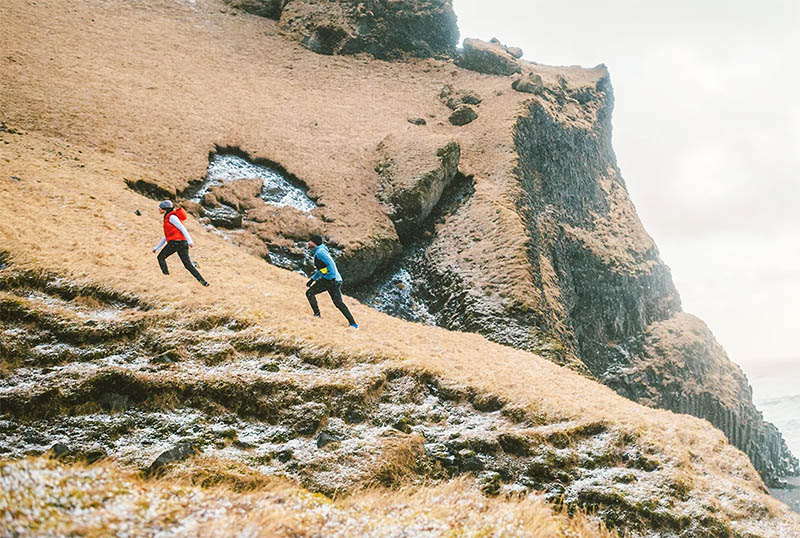Columbia Sportswear reported a better-than-expected fourth-quarter due to continued robust e-commerce sales and a spike in wholesale reorders in December. Officials also provided an upbeat outlook for 2021, projecting 18 percent to 20 percent net sales growth with growth across all four of its brands.
On a conference call with analysts, Tim Boyle, chairman, president, and CEO, said, “As we begin 2021, we’re encouraged by the building momentum across our brand portfolio reflected in the continued robust growth of our e-commerce channel and a meaningful recovery in wholesale orders for the spring and Fall 2021 seasons.”
In the fourth quarter ended December 31, sales decreased 4 percent to $915.7 million from $954.9 million for the comparable period in 2019. Wall Street’s consensus estimate had been $866.40 million. Net sales benefited from later shipment of Fall 2020 wholesale orders as outlined in the third quarter 2020 earnings release.
Gross margin expanded 50 basis points to 50.6 percent of net sales from 50.1 percent of net sales for the comparable period in 2019.
SG&A expenses were essentially flat at $343.3 million, or 37.5 percent of net sales, from $344.4 million, or 36.1 percent of net sales, a year ago.
Operating income decreased 11 percent to $123.7 million, or 13.5 percent of net sales, from operating income of $138.6 million, or 14.5 percent of net sales, for the comparable period in 2019. Fourth-quarter 2020 operating income includes $18.1 million in retail impairments and store closure charges and a $17.5 million Prana trademark impairment.
Net income decreased 16 percent to $95.8 million, or $1.44 per diluted share, from net income of $114.0 million, or $1.67 per diluted share, for the comparable period in 2019. Wall Street’s consensus estimate has been $1.21.
E-commerce Sales Catapult 41 Percent In Q4
Wholesale net sales declined 5 percent in the fourth quarter, driven by earlier actions to curtail purchases of Fall 2020 inventory in conjunction with wholesale customer order cancellations and lower consumer demand resulting from the pandemic. Later timing of Fall 2020 shipments partially offset this.
Direct-to-consumer (DTC) net sales declined 3 percent. E-commerce sales catapulted 41 percent year-over-year and represented 23 percent of the total net sales mix. The company went live on a new mobile-first e-commerce platform, X1, in North America for the Columbia, Sorel and Mountain Hardwear brands during the third quarter. Said Boyle, “I’m pleased to report the X1 platform performed exceptionally well during the peak season and contributed to improved site performance and conversion.”
Brick & mortar store traffic and sales trends improved sequentially but remained well below prior-year levels.
U.S. Q4 Sales Slide 6 Percent
In the U.S., fourth-quarter sales decreased 6 percent, reflecting a mid-single-digit percent decline in both wholesale and DTC sales.
“Stronger-than-anticipated consumer demand helped fuel strong wholesale reorders despite a warm start to winter that reduced early season outerwear sell-through,” said Boyle. “As colder weather arrived in December, outerwear sell-through accelerated, and retailers are well-positioned to exit the season with clean inventory positions. Recovery curves across our broad distribution vary greatly with sporting goods and online retailers leading the recovery in wholesale.”
In DTC, stronger-than-anticipated consumer demand drove high 30 percent e-commerce growth and improved store performance in the U.S. The brick-and-mortar sales decline moderated compared to the third quarter, but limited tourism, government-mandated restrictions, and growing consumer preference to shop online contributed to depressed store traffic levels.
Internationally, sales in the Latin America Asia Pacific (LAAP) region decreased 8 percent on a currency-neutral basis. In Asia, store traffic and sales trends continued to improve during the quarter, with some weeks returning to positive year-over-year growth. In direct markets, Japan grew by a low-single-digit percent, Korea declined low-single-digit percent, and China was down high-single-digit percent. The performance marked “meaningful improvement” compared to the third quarter, and the region is expected to return to growth in 2021.
In the Europe, Middle East, Africa (EMEA) region, sales decreased 18 percent on a currency-neutral basis. Europe direct net sales grew low-single-digit percent driven by wholesale and e-commerce growth. Those gains were partially offset by a decline in DTC brick & mortar sales, primarily resulting from lockdown restrictions. EMEA distributor net sales decreased by a high 50 percent, reflecting challenging conditions in several markets and later timing of spring 2021 shipments that have shifted into the first quarter of 2021.
Canada’s sales jumped 37 percent in the quarter, benefiting from the later timing of fall 2020 shipments and, to a lesser extent, robust e-commerce sales.

Columbia’s Flagship Brand Sees 7 Percent Q4 Decline
Sales for the flagship Columbia brand were down 7 percent in the quarter, to $699.7 million. Said Boye, “Consumer demand ultimately exceeded our expectations, resulting in strong wholesale reorders and sell-through rates, while a warm start to winter in the U.S. reduced early season outerwear sell-through, trends improved in December as colder weather arrived. Globally, I would characterize weather for the Fall 2020 season as within the band of normal to favorable for most of our key markets.”
By category, interest in poly fleece styles “was quite strong,” reflecting the stay-at-home economy. Popular insulated styles women’s Heavenly and Suttle Mountain jackets were top sellers. In footwear, classic styles like the Newton Ridge and the winter boot lines, including the Fairbanks, Bugaboot, Ice Maiden, and Minx, were top performers.
Boyle added, “Overall, strong season-to-date sell-through rates and cold weather in early 2021 are helping retailers exit the season with clean inventory positions. This creates a favorable backdrop for the Fall 2021 order book and season.”
Highlights for the Columbia brand include the launch of its fifth annual Star Wars collection that was the brand’s most extensive and saw a “phenomenal response” from consumers and the media. Several media outlets called out Columbia’s new Omni-Heat Black Dot technology and specific styles, including the Peak Pursuit, Women’s Alpine Crux and Autumn Park Down Jacket in its outerwear styles, as well as the Hyper-Boreal Omni-Heat boot likewise received favorable media coverage.
During the fourth quarter, the Columbia brand prioritized digital and social media outreach to capitalize on online strength. Columbia’s DTC e-commerce business grew 39 percent for the year and represented 15 percent of the brand’s total net sales mix.
All three of the company’s emerging brands returned to growth in the fourth quarter, with signs of momentum building in 2021. Growth for Sorel, Prana and Mountain Hardwear were paced by e-commerce.
Sorel’s Q4 Sales Climb 5 Percent
Sorel’s sales increased 5 percent in the quarter, to $150 million, led by e-commerce growth. For the year, Sorel’s DTC e-commerce business grew 44 percent and represented 31 percent of the brand’s total net sales mix.
“In 2020, as the pandemic took hold, consumer brand affinity for Sorel remained high, and demand shifted toward versatile collections such as Kinetic Sneakers, Ella Sandal, and classic slippers,” said Boyle. “For the full year, sneaker category net sales, led by the Kinetic collection, grew nearly 200 percent year-on-year on Sorel’s North America e-commerce sites. Successes in these new categories validate Sorel’s evolution beyond its legacy winter utility business to become a year-round, function-first fashion footwear brand.”
Prana’s Q4 Sales Jump 11 Percent
Prana’s sales climbed 11 percent in the fourth quarter, to $36.9 million. E-commerce sales catapulted 41 percent. Top-selling categories included fleece, fitness apparel and flannels as consumers shop for their at-home routines. For the full-year, Prana’s DTC e-commerce business grew 37 percent and represented 47 percent of the brand’s total sales mix. This growth included record new customer acquisitions.
Said Boyle, “It’s clear that Prana’s commitment to being an industry leader in sustainability and its mission to create clothing for positive change is driving new consumers to the brand. As we begin 2021, I believe Prana is uniquely positioned at the intersection of four growing consumer trends: rising participation in outdoor activities, conscious consumerism, sustainability, and growing demand for yoga and active apparel.”
This spring, Prana is continuing to strengthen its sustainability focus with the introduction of ReZion, the next generation of its best-selling Stretch Zion fabric featuring recycled nylon and PFC-free durable water repellency.
Mountain Hardwear’s Q4 Sales Improved 7 Percent
Mountain Hardwear’s sales increased 7 percent in the fourth quarter to $29.1 million. For the full-year, Mountain Hardwear’s DTC e-commerce business grew 31 percent and represented 25 percent of the brand’s sales mix.
Boyle said, “The investments we’ve made in recent years in Mountain Hardwear’s reenergized product line and modernize messaging and looks are sparking consumer and retail interest. Looking at the Fall 2021 order book, strong growth at key wholesale accounts and meaningful new distribution demonstrates retailers are embracing the brand’s direction. In 2021, the Mountain Hardwear team is focusing on driving U.S. wholesale growth and sustaining e-commerce momentum. Unlocking the brand’s full potential in these two important domestic businesses is the first step to realizing the brand vision of becoming the most desired mountain sports brand in the world.”
Bullish Outlook For 2021
Looking ahead, Boyle said the 18 percent to 20 percent sales growth target for 2021 is based on Spring and Fall 2021 orders that indicate a return to growth in its wholesale business, with notable strength in its Fall 2021 order book. Other items contemplated in the outlook included continued DTC e-commerce growth and a return to growth in DTC brick & mortar sales.
The recovery in brick & mortar sales factors in the benefit of lapping prior year store closures and a gradual fundamental improvement over the year. From a category perspective, the year-over-year growth rate of footwear is anticipated to be relatively similar to apparel in 2021.
Addressing some growth strategies, Boyle said Columbia remains “committed to creating products that inspire active consumers” as the world still deals with adjustments to COVID-19. For Columbia, the brand’s most advanced cooling technology to date, Omni-Freeze Zero Ice, will launch this Spring and Omni-Heat Infinity will launch this Fall. Boyle described Omni-Heat Infinity as the “largest innovation launch in our company’s history, and early retailer feedback and orders have been incredibly encouraging.”
Footwear offerings from both Columbia and Sorel have been helped in recent years by elevated design and merchandising capabilities and momentum in footwear “remains evident in our spring and fall 2021 order book.”
Marketing spend will be increased to 6 percent of sales in 2021 compared to 5.7 percent in 2020, “given the confidence in our brand portfolio.” Boyle said this represents the highest level as a percent of sales in Columbia’s history as a public company. Digital marketing and social media investments will continue to be a priority.
The company’s DTC focus will continue to be recalibrated. Thirteen underperforming stores, primarily full-price stores, were closed in the U.S. and one in Europe in 2020. In 2021, approximately eight stores are expected to open in the U.S., primarily outlet stores.
From a financial perspective, gross margin is expected to expand approximately 110 basis points to 50 percent in 2021, and SG&A is projected to grow slower than net sales.
Looking at the first half, high-teens percent to low 20 percent year-over-year sales growth is expected. Due to the later Spring 2021 receipts and deliveries, sales growth is projected to be heavily weighted into the second quarter.
Boyle cautioned that the company still faces several operational headwinds and unknowns, including uncertainty over the pandemic’s recovery and the resumption of international tourism supporting stores in destination locations and tourist-dependent markets. Industrywide constraints on ocean transportation, including vessel and container shortages, is also resulting in later receipts and customer deliveries of spring 2021 production. Boyle said, “Our supply chain and logistics teams are working diligently to mitigate disruptions.”
Photos courtesy Columbia Sportswear
















